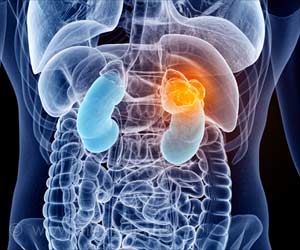
‘The Gab2 protein is crucial for the development and spread of chronic myeloid leukemia (CML). Doctors could infer the course of the disease by measuring Gab2 levels.’
Tweet it Now
The team, including Dr. Tilman Brummer, Prof. Dr. Dengjel, Dr. Konrad Aumann, and Dr. Sebastian Halbach, published its findings in the journals Leukemia and Cell Communication and Signaling. The protein Gab2 works like a multi-outlet power strip for proteins in a chain of signals. It can pass on a signal it receives to several enzymes at once and can also amplify the signal. When a large amount of Gab2 is present, it often develops cancer-causing properties. In CML cells, Gab2 amplifies the signal of the protein Bcr-Abl. This protein causes certain cells in the bone marrow and in the blood to grow uncontrollably, thus allowing the cancer to spread more rapidly.
An approach often used in treating CML is to block the Bcr-Abl activity using tyrosine kinase inhibitors (TKIs). Yet even when this targeted therapy is successful, it is not possible to kill off all of the diseased cells - particularly the leukemia stem cells in the bone marrow. Lifelong treatment is necessary to keep the disease under control.
Many leukemias acquire a resistance to the TKIs used for the therapy over time, and the patient suffers a relapse. To make matters worse, there are also forms of primary resistance in which the leukemia cells react insufficiently to certain TKIs from the outset. The primary and acquired resistances are a major stumbling block in the treatment of CML that is still only poorly understood.
The Freiburg team demonstrated that the drugs sorafenib and axitinib, which are currently approved only for kidney and liver cancer, are effective in CML model systems as well. In experiments on cell cultures, both of these inhibitors succeeded in breaking various forms of the TKI resistance: including forms caused by additional mutations of the gene Bcr-Abl as well as those caused by large quantities of the protein Gab2. Hence, both of the drugs could serve as alternatives for treating CML - especially in patients who have developed a resistance to the medication they have been receiving so far.
Advertisement
Source-Eurekalert















